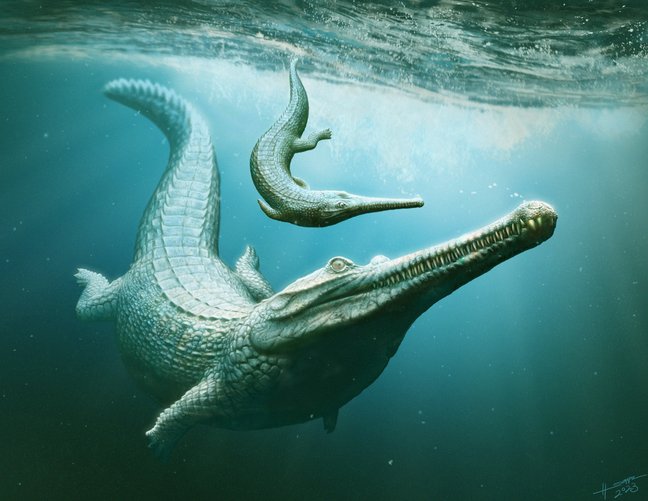Teleosauroids were a near-globally distributed group of crocodylomorphs from the Early Jurassic, the fossil remains of which can be found particularly frequently today in the Posidonia Shale of Southwest Germany. The large number of fossils of the crocodile-like marine reptiles covers a wide range of ages and sizes, from babies with lengths of about 50 cm to giants 5 m long. A team from the Natural History Museum in Stuttgart led by the Canadian palaeontologist Michela Johnson investigated the question of how these primeval marine crocodiles grew in the course of their lives.
To solve this question the team studied sixty-two fossil specimens of the teleosauroid species Macrospondylus bollensis, including sixteen juveniles, seven subadults and thirty-nine adults. The unexpected result: Macrospondylus bollensis grew almost isometrically. This means that most body parts grew at near-equal rates throughout all developmental stages. An unusual feature in vertebrates. Most of today’s crocodile species display unequal growth during their development. An exception can be found in gavials, a family of crocodiles resembling Macrospondylus bollensis in growth rates, morphology and lifestyle while not being closely related. Where these similarities come from, however, is not yet studied and could be the subject of future research.
Illustration: Henry Sutherland Sharpe
